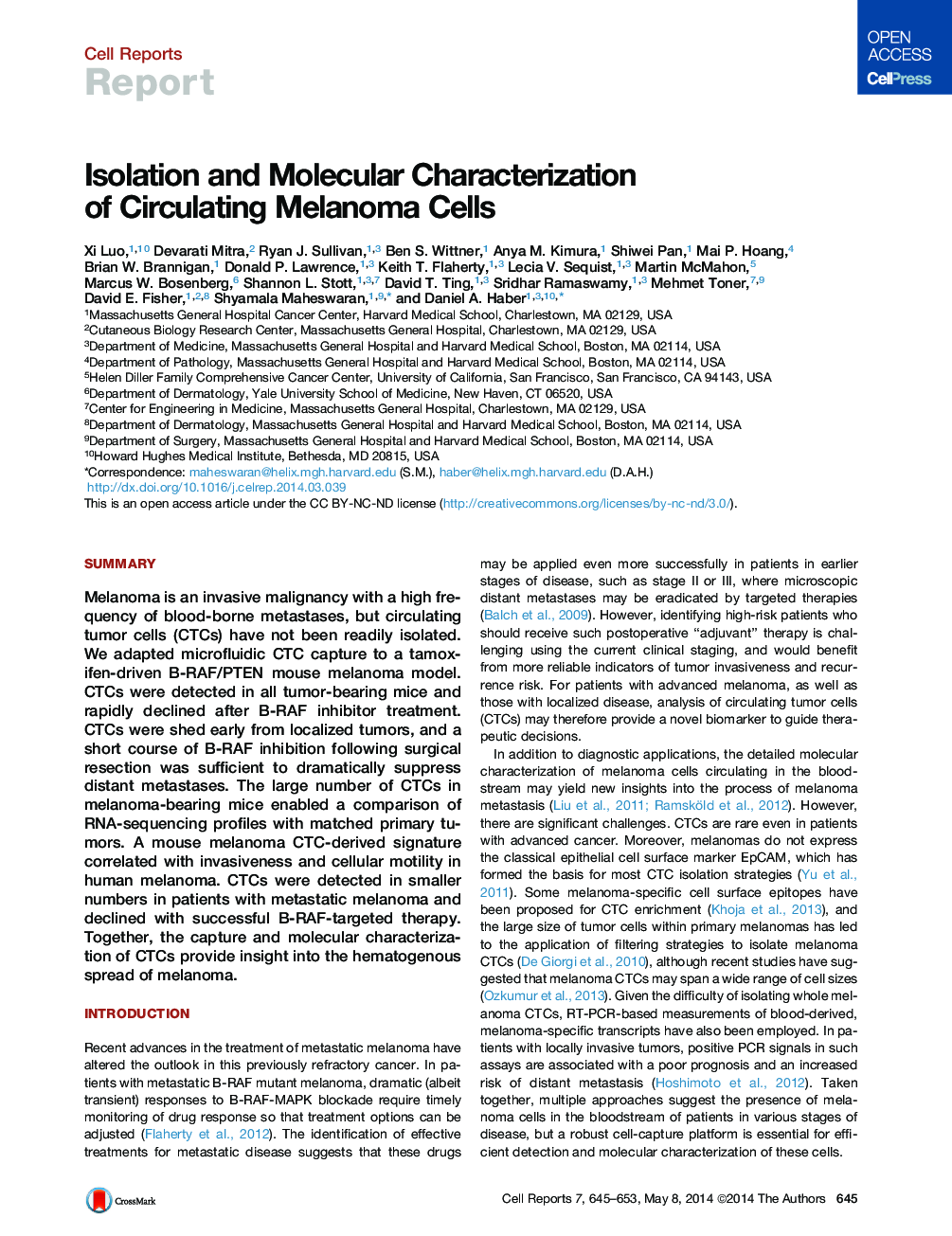| Article ID | Journal | Published Year | Pages | File Type |
|---|---|---|---|---|
| 2041802 | Cell Reports | 2014 | 9 Pages |
•Microfluidic isolation of circulating melanoma cells in a B-RAF-driven mouse model•CTC numbers correlate with tumor response to B-RAF-targeted therapies•CTCs are shed early and postresection B-RAF inhibition prevents metastasis in mouse•RNA-seq of mouse CTCs identifies a signature related to melanoma invasiveness
SummaryMelanoma is an invasive malignancy with a high frequency of blood-borne metastases, but circulating tumor cells (CTCs) have not been readily isolated. We adapted microfluidic CTC capture to a tamoxifen-driven B-RAF/PTEN mouse melanoma model. CTCs were detected in all tumor-bearing mice and rapidly declined after B-RAF inhibitor treatment. CTCs were shed early from localized tumors, and a short course of B-RAF inhibition following surgical resection was sufficient to dramatically suppress distant metastases. The large number of CTCs in melanoma-bearing mice enabled a comparison of RNA-sequencing profiles with matched primary tumors. A mouse melanoma CTC-derived signature correlated with invasiveness and cellular motility in human melanoma. CTCs were detected in smaller numbers in patients with metastatic melanoma and declined with successful B-RAF-targeted therapy. Together, the capture and molecular characterization of CTCs provide insight into the hematogenous spread of melanoma.
Graphical AbstractFigure optionsDownload full-size imageDownload as PowerPoint slide
